Spain, the land of flamenco, tapas, and fiestas, a captivating country that effortlessly weaves together its vibrant past and its dynamic present, offering visitors a wealth of experiences that range from exploring ancient Roman ruins to indulging in the lively modern culture. With every corner of Spain showcasing a unique blend of history, architecture, and natural beauty, this country has become one of the most sought-after travel destinations in the world.
In this guide, we’ll explore the top attractions across the country, providing you with all the necessary information, including entry prices, visiting hours, and tips for making the most out of your visit.
1. The Alhambra, Granada
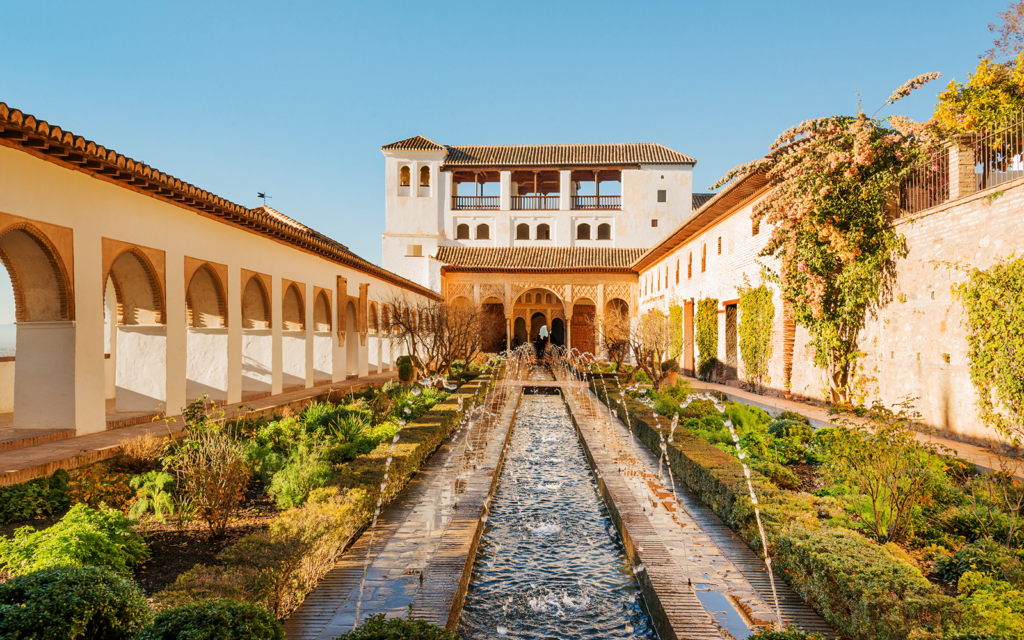
The Alhambra is a stunning palace and fortress complex that sits majestically atop a hill in Granada, Andalusia. It’s one of the most significant remnants of Moorish (morocco) architecture in Spain and a UNESCO World Heritage Site.
History and Architecture: Originally constructed as a small fortress in 889 AD, it was later converted into a royal palace in 1333 by Yusuf I, the Sultan of Granada. The complex features beautiful courtyards, fountains, and intricately designed tiles that reflect the opulence of Moorish art.
What to See: Don’t miss the Nasrid Palaces, the Generalife gardens, and the Alcazaba fortress. The views of Granada and the Sierra Nevada mountains from the Alhambra are spectacular, especially at sunset.
Tickets and Prices: Due to its popularity, it’s recommended to book tickets in advance. Prices for general admission range from €14 to €19. A guided tour can cost around €45, offering deeper insights into the site’s history.
Visiting Hours: The Alhambra is open from 8:30 AM to 8:00 PM in the summer and until 6:00 PM in the winter. Night visits are also available for a unique experience.
Travel Tip: Wear comfortable shoes, as the complex is large and involves a lot of walking. Arrive early to avoid the crowds and bring a bottle of water, especially during the hot summer months.
2. La Sagrada Familia, Barcelona

Antoni Gaudí’s masterpiece, La Sagrada Familia, is one of the most iconic landmarks in Spain. This basilica, still under construction since 1882, is an epitome of modernist architecture and attracts millions of visitors each year.
History and Architecture: Gaudí dedicated the last 15 years of his life entirely to this project, which combines Gothic and curvilinear Art Nouveau forms. The basilica’s towering spires and intricate facades are a testament to Gaudí’s unique vision.
What to See: The Nativity and Passion facades are filled with symbolic sculptures. Inside, the stunning stained glass windows cast colorful light across the space, creating a serene and awe-inspiring atmosphere.
Tickets and Prices: Basic entry tickets start at €26. A guided tour, which includes access to the towers, costs around €41. It’s advisable to buy tickets online to avoid long queues.
Visiting Hours: The basilica is open from 9:00 AM to 8:00 PM. Visiting in the late afternoon is ideal for experiencing the mesmerizing light inside.
Travel Tip: Book your tickets well in advance, as they sell out quickly. Download the official app for an audio guide that explains the intricate details of Gaudí’s work.
3. Park Güell, Barcelona

Another of Gaudí’s masterpieces, Park Güell, is a colorful and whimsical park that offers breathtaking views of Barcelona.
History and Architecture: Originally conceived as a residential project, the park was transformed into a public space adorned with Gaudí’s characteristic mosaics and organic shapes. The Serpentine Bench, adorned with vibrant tiles, and the Dragon Stairway are among the highlights.
What to See: Explore the Hypostyle Hall with its stunning mosaic ceiling, and don’t miss the panoramic views from the terrace above. The park’s natural elements, combined with Gaudí’s architectural genius, make it a truly magical place.
Tickets and Prices: Entry to the monumental zone costs €10. A guided tour is priced around €24, providing insight into Gaudí’s inspirations and techniques.
Visiting Hours: Open from 8:00 AM to 9:30 PM in the summer and until 6:15 PM in the winter.
Travel Tip: Arrive early or visit late in the day to avoid the crowds. Wear comfortable shoes as the park is hilly and requires a fair bit of walking.
4. The Prado Museum, Madrid
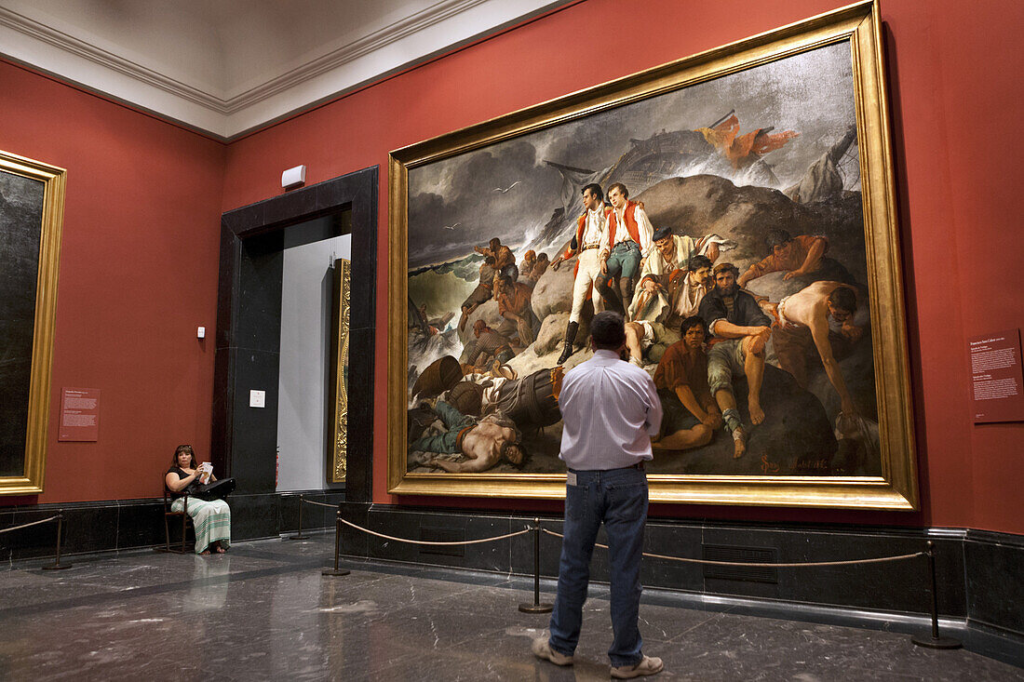
For art enthusiasts, the Prado Museum in Madrid is a must-visit. It houses one of the world’s finest collections of European art, spanning from the 12th to the 19th century.
History and Collection: The museum, founded in 1819, features works by Spanish masters such as Velázquez, Goya, and El Greco, as well as pieces by Rubens, Titian, and Bosch. The museum’s centerpiece is Velázquez’s Las Meninas, a complex and enigmatic painting that continues to captivate viewers.
What to See: Besides Las Meninas, highlights include Goya’s The Third of May 1808, Bosch’s The Garden of Earthly Delights, and Titian’s Danaë. The museum’s collection is vast, so plan your visit to focus on specific sections or artists.
Tickets and Prices: General admission is €15. Reduced tickets are available for students and seniors at €7.50. Entry is free from 6:00 PM to 8:00 PM on weekdays and from 5:00 PM to 7:00 PM on Sundays.
Visiting Hours: Open Monday to Saturday from 10:00 AM to 8:00 PM, and Sunday from 10:00 AM to 7:00 PM.
Travel Tip: To make the most of your visit, consider renting an audio guide or joining a guided tour. The museum can be overwhelming, so having a plan will help you navigate its extensive collection.
5. The Royal Palace, Madrid
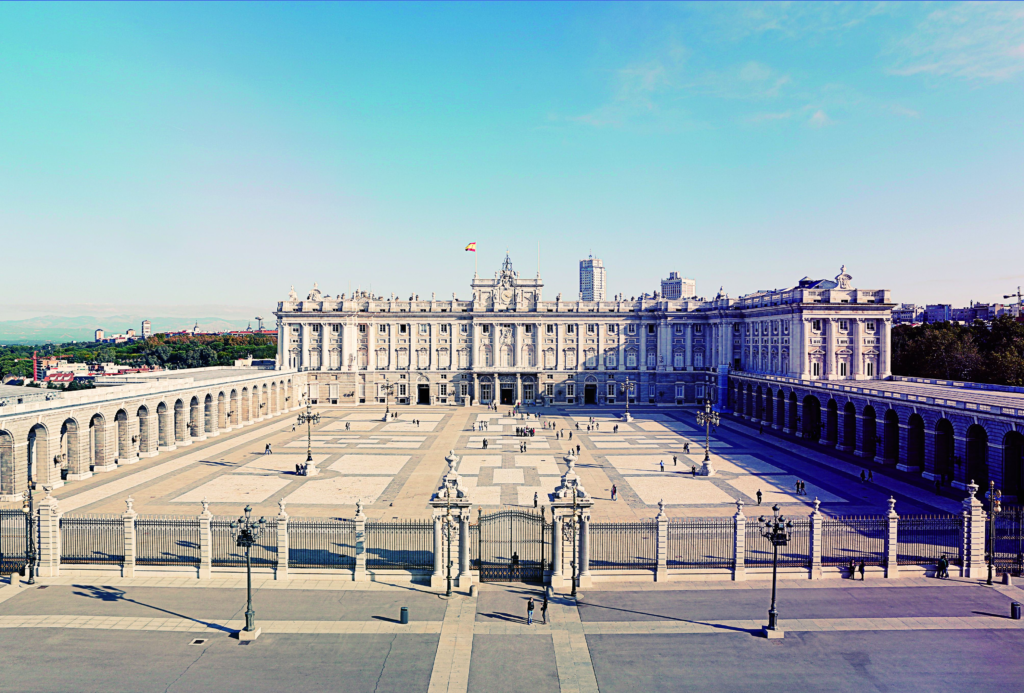
The Royal Palace of Madrid, with its grand architecture and lavish interiors, is the official residence of the Spanish Royal Family, although it is now only used for state ceremonies.
History and Architecture: Constructed in the 18th century on the site of a former Alcázar, the palace features over 3,000 rooms, including the Throne Room, the Hall of Mirrors, and the Royal Armoury. The opulent decoration, with frescoes, tapestries, and ornate furnishings, reflects the grandeur of the Spanish monarchy.
What to See: Highlights include the Royal Armoury, the Royal Pharmacy, and the grand staircase designed by Sabatini. The palace gardens, known as Campo del Moro, offer a peaceful retreat with stunning views of the palace.
Tickets and Prices: General admission is €12. Guided tours, which provide a deeper understanding of the palace’s history, are available for around €20.
Visiting Hours: Open from 10:00 AM to 6:00 PM in the winter and until 8:00 PM in the summer.
Travel Tip: Visit during the free admission hours from 4:00 PM to 6:00 PM (October to March) and from 6:00 PM to 8:00 PM (April to September) for EU citizens. Arrive early, as the lines can be long.
6. The Great Mosque of Córdoba

The Mezquita, or Great Mosque of Córdoba, is a symbol of Spain’s rich Moorish Islamic heritage and one of the most beautiful examples of Moorish architecture in the world.
History and Architecture: Originally a Visigoth church, it was converted into a mosque in the 8th century. After the Reconquista, it became a Catholic cathedral. The building’s architecture is a fascinating blend of Islamic and Christian styles, with its iconic horseshoe arches, red-and-white striped arches, and the breathtaking Mihrab.
What to See: The Prayer Hall, with its forest of columns, is mesmerizing. The Mihrab, a stunning prayer niche, is adorned with intricate mosaics. The Renaissance-style cathedral nave, added in the 16th century, is also worth exploring.
Tickets and Prices: General admission is €11. Free entry is available for early morning visits between 8:30 AM and 9:30 AM.
Visiting Hours: Open from 10:00 AM to 6:00 PM (November to February) and until 7:00 PM (March to October).
Travel Tip: Visit early in the morning for free entry and to enjoy the mosque-cathedral in a quieter atmosphere. A guided tour can provide valuable context to the building’s unique history.
7. The Guggenheim Museum, Bilbao
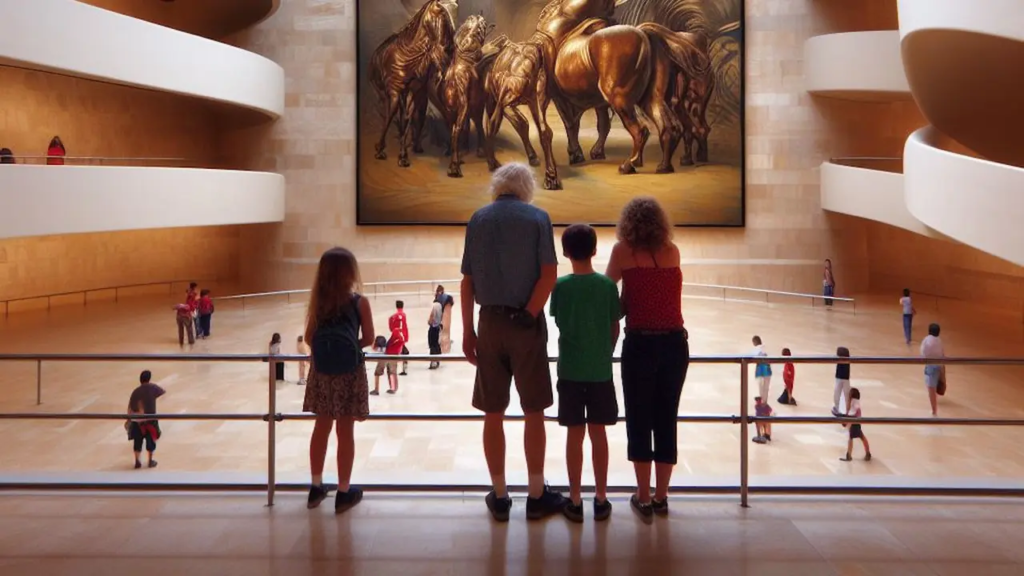
The Guggenheim Museum in Bilbao is not only an art museum but also an architectural marvel. Designed by Frank Gehry, the building’s undulating titanium curves have become an iconic symbol of modern architecture.
History and Architecture: Opened in 1997, the museum revitalized the city of Bilbao, transforming it into a cultural hotspot. The building itself, with its organic forms and reflective surfaces, is a masterpiece of contemporary design.
What to See: The museum houses an impressive collection of modern and contemporary art, including works by artists such as Jeff Koons, Richard Serra, and Anish Kapoor. Don’t miss Serra’s The Matter of Time, a series of massive, spiraling sculptures that invite visitors to walk through and experience their scale and form.
Tickets and Prices: General admission is €16. Discounts are available for students and seniors. Children under 12 enter for free.
Visiting Hours: Open from 10:00 AM to 8:00 PM. Closed on Mondays except in July and August.
Travel Tip: The exterior of the museum is as fascinating as the
interior. Take some time to walk around and admire the sculptures and the building’s interaction with its surroundings.
8. La Rambla, Barcelona

La Rambla is a bustling boulevard in the heart of Barcelona, stretching from Plaça de Catalunya to the Christopher Columbus Monument at Port Vell. It’s a vibrant, lively street filled with shops, restaurants, and cultural attractions.
History and Atmosphere: Originally a stream outside the city walls, La Rambla became a promenade in the 18th century. Today, it’s one of the most famous streets in Barcelona, drawing tourists and locals alike.
What to See: Stroll along La Rambla to experience the vibrant atmosphere. Visit the Boqueria Market, a bustling market offering a wide array of fresh produce, tapas, and local delicacies. The street is also home to the Liceu Opera House and numerous street performers.
Tickets and Prices: Walking along La Rambla is free. However, it’s easy to spend money at the market and shops along the way.
Travel Tip: Be cautious of pickpockets, especially in crowded areas. Visit early in the morning or late in the evening for a quieter experience.
9. The Aqueduct of Segovia

The Roman Aqueduct of Segovia is one of Spain’s most well-preserved ancient monuments. This engineering marvel, constructed around the 1st century AD, supplied water to the city of Segovia for nearly two millennia.
History and Engineering: Built without mortar, the aqueduct’s 167 arches are held together solely by the precision of their construction. It stretches for about 15 kilometers and is a testament to Roman engineering prowess.
What to See: The aqueduct is most impressive at the Plaza del Azoguejo, where it reaches a height of 28 meters. The structure’s beauty and symmetry are best appreciated from different vantage points around the city.
Tickets and Prices: Visiting the aqueduct is free. Guided tours of Segovia, which include information about the aqueduct, cost around €10-€15.
Travel Tip: For the best photos, visit early in the morning or at sunset when the light is softer and the crowds are thinner. Combine your visit with a tour of Segovia’s other attractions, such as the Alcázar and the Cathedral.
10. Santiago de Compostela Cathedral
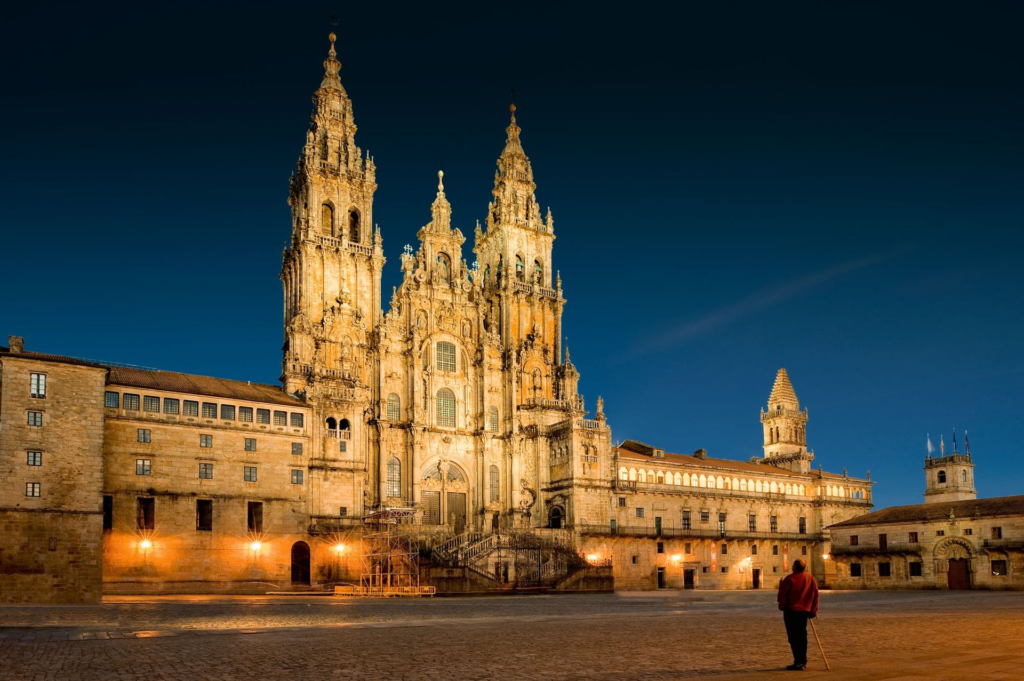
The Santiago de Compostela Cathedral is the culmination of the Camino de Santiago pilgrimage and a stunning example of Romanesque architecture. It’s one of the most important religious sites in Spain and a UNESCO World Heritage Site.
History and Architecture: Construction of the cathedral began in 1075 and continued over several centuries, resulting in a blend of Romanesque, Gothic, and Baroque styles. The cathedral’s impressive façade and the ornate interior make it a breathtaking sight.
What to See: The Portico of Glory, a magnificent Romanesque doorway, is one of the cathedral’s highlights. Inside, the high altar and the tomb of Saint James, one of Jesus’s apostles, are significant pilgrimage sites.
Tickets and Prices: Entry to the cathedral is free. Access to the museum and guided rooftop tours costs around €12.
Visiting Hours: Open daily from 7:00 AM to 8:30 PM. The museum is open from 10:00 AM to 8:00 PM.
Travel Tip: Attend the Pilgrim’s Mass at noon for a unique experience. If you’ve completed the Camino, present your pilgrim’s passport to receive a certificate of completion.
Spain’s rich cultural heritage and diverse landscapes offer countless attractions that cater to all interests. From the architectural wonders of Gaudí in Barcelona to the historical grandeur of the Alhambra in Granada, each destination provides a unique window into the country’s past and present. When planning your trip, consider the best times to visit, ticket prices, and local tips to make the most of your experience. Whether you’re exploring the vibrant streets of Madrid or the serene beauty of Andalusia, Spain promises an unforgettable journey filled with history, art, and vibrant culture.
Another acticle: Why Spain Nomad Visa Is the Best in the World





